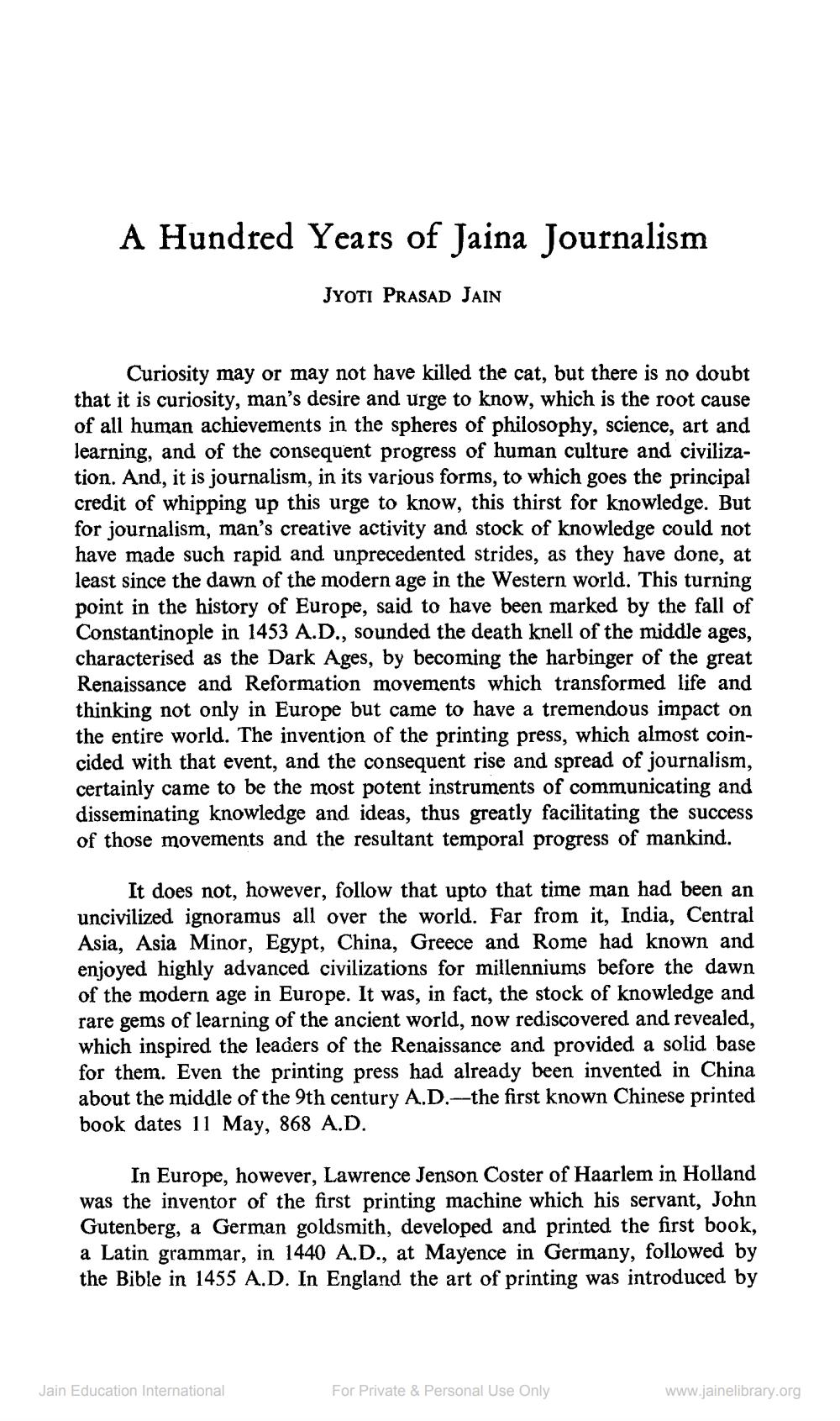Book Title: Jain Journal 1978 04 Author(s): Jain Bhawan Publication Publisher: Jain Bhawan Publication View full book textPage 7
________________ A Hundred Years of Jaina Journalism JYOTI PRASAD JAIN Curiosity may or may not have killed the cat, but there is no doubt that it is curiosity, man's desire and urge to know, which is the root cause of all human achievements in the spheres of philosophy, science, art and learning, and of the consequent progress of human culture and civilization. And, it is journalism, in its various forms, to which goes the principal credit of whipping up this urge to know, this thirst for knowledge. But for journalism, man's creative activity and stock of knowledge could not have made such rapid and unprecedented strides, as they have done, at least since the dawn of the modern age in the Western world. This turning point in the history of Europe, said to have been marked by the fall of Constantinople in 1453 A.D., sounded the death knell of the middle ages, characterised as the Dark Ages, by becoming the harbinger of the great Renaissance and Reformation movements which transformed life and thinking not only in Europe but came to have a tremendous impact on the entire world. The invention of the printing press, which almost coincided with that event, and the consequent rise and spread of journalism, certainly came to be the most potent instruments of communicating and disseminating knowledge and ideas, thus greatly facilitating the succe of those movements and the resultant temporal progress of mankind. It does not, however, follow that upto that time man had been an uncivilized ignoramus all over the world. Far from it, India, Central Asia, Asia Minor, Egypt, China, Greece and Rome had known and enjoyed highly advanced civilizations for millenniums before the dawn of the modern age in Europe. It was, in fact, the stock of knowledge and rare gems of learning of the ancient world, now rediscovered and revealed, which inspired the leaders of the Renaissance and provided a solid base for them. Even the printing press had already been invented in China about the middle of the 9th century A.D.--the first known Chinese printed book dates 11 May, 868 A.D. In Europe, however, Lawrence Jenson Coster of Haarlem in Holland was the inventor of the first printing machine which his servant, John Gutenberg, a German goldsmith, developed and printed the first book, a Latin grammar, in 1440 A.D., at Mayence in Germany, followed by the Bible in 1455 A.D. In England the art of printing was introduced by Jain Education International For Private & Personal Use Only www.jainelibrary.orgPage Navigation
1 ... 5 6 7 8 9 10 11 12 13 14 15 16 17 18 19 20 21 22 23 24 25 26 27 28 29 30 31 32 33 34 35 36 37 38 39 40 41 42 43 44 45 46 47 48 49 50 51 52 53
